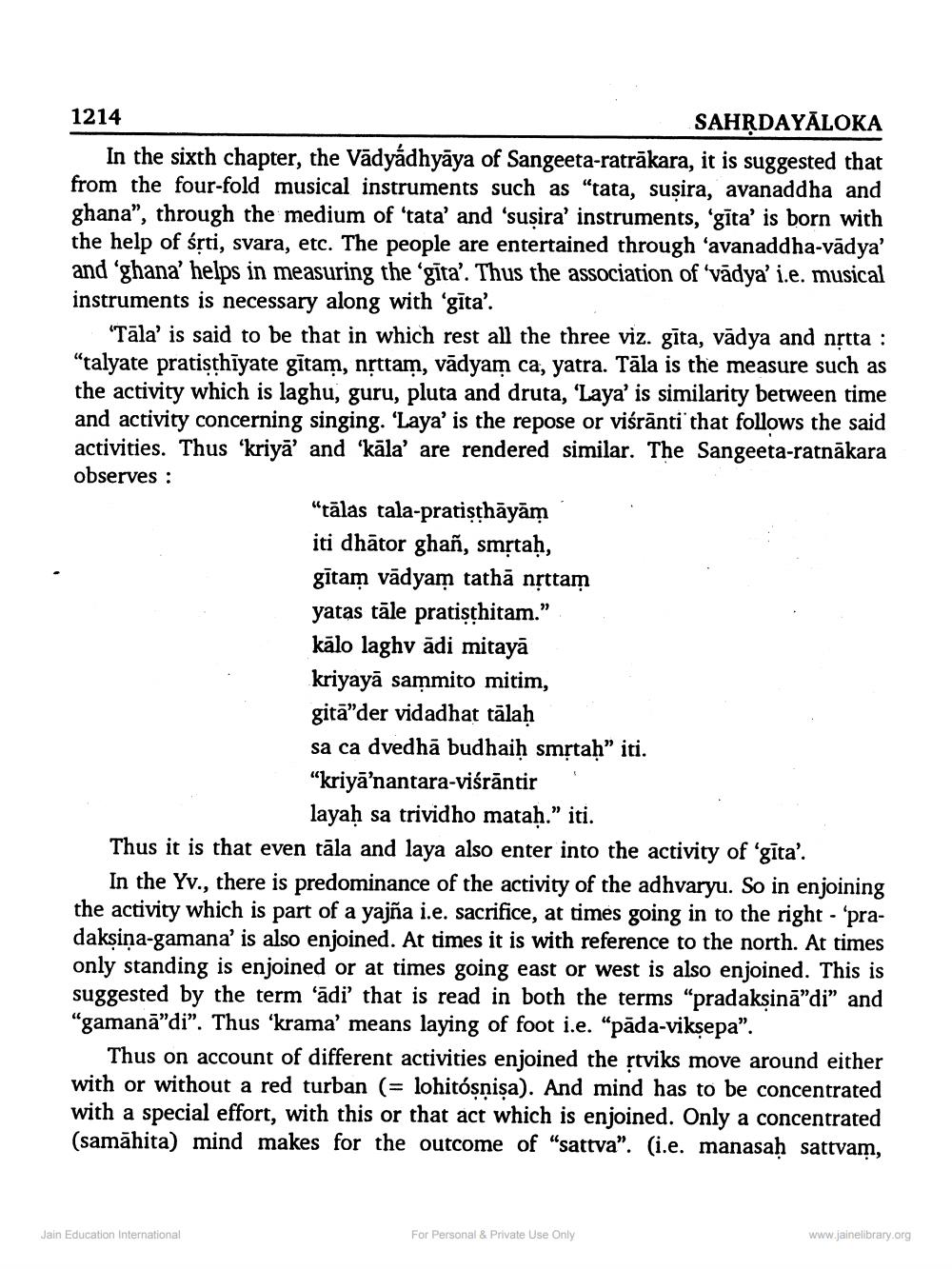________________
1214
SAHṚDAYALOKA In the sixth chapter, the Vädyádhyāya of Sangeeta-ratrakara, it is suggested that from the four-fold musical instruments such as "tata, susira, avanaddha and ghana", through the medium of 'tata' and 'sușira' instruments, 'gīta' is born with the help of śṛti, svara, etc. The people are entertained through 'avanaddha-vādya' and 'ghana' helps in measuring the 'gita'. Thus the association of 'vädya' i.e. musical instruments is necessary along with 'gita'.
"Tala' is said to be that in which rest all the three viz. gīta, vadya and nṛtta : "talyate pratisthiyate gītam, nṛttam, vādyam ca, yatra. Tāla is the measure such as the activity which is laghu, guru, pluta and druta, ‘Laya' is similarity between time and activity concerning singing. 'Laya' is the repose or viśranti that follows the said activities. Thus 'kriya' and 'kāla' are rendered similar. The Sangeeta-ratnākara observes:
"tālas tala-pratisthāyām iti dhātor ghan, smṛtaḥ,
gītam vadyam tathā nṛttam yatas tāle pratisthitam."
kālo laghv ādi mitayā kriyaya sammito mitim,
gita"der vidadhat tālaḥ
sa ca dvedha budhaiḥ smṛtah" iti. "kriya'nantara-viśrantir
layaḥ sa trividho mataḥ." iti.
Thus it is that even tāla and laya also enter into the activity of 'gita'.
In the Yv., there is predominance of the activity of the adhvaryu. So in enjoining the activity which is part of a yajña i.e. sacrifice, at times going in to the right 'pradakṣina-gamana' is also enjoined. At times it is with reference to the north. At times only standing is enjoined or at times going east or west is also enjoined. This is suggested by the term 'adi' that is read in both the terms "pradakṣinā"di" and "gamana"di". Thus 'krama' means laying of foot i.e. "pada-vikṣepa".
Thus on account of different activities enjoined the ṛtviks move around either with or without a red turban (= lohitóṣnisa). And mind has to be concentrated with a special effort, with this or that act which is enjoined. Only a concentrated (samāhita) mind makes for the outcome of "sattva". (i.e. manasaḥ sattvam,
Jain Education International
For Personal & Private Use Only
www.jainelibrary.org




